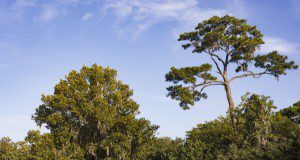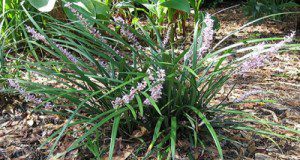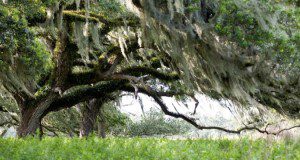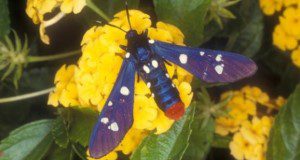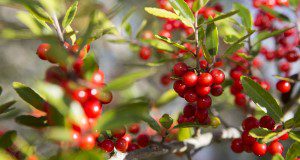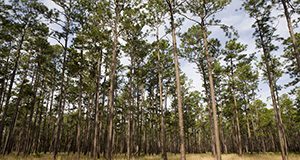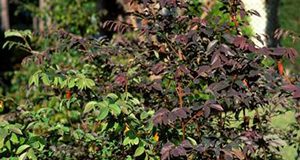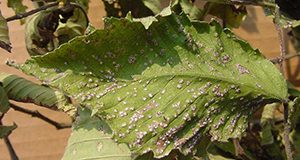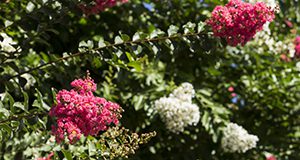This series of Key Plant, Key Pests publications are designed for Florida gardeners, horticulturalists, and landscape professionals to help identify common pests associated with regional flora. This new 6-page publication of the UF/IFAS Environmental Horticulture Department helps identify the most common pests found on trees in the sycamore group, Platanus spp., and it provides information and general management recommendations for sycamore lace bug, bacterial leaf scorch, powdery mildew, anthracnose, and canker stain. Written by Matthew Borden, Kelly Laplante, Juanita Popenoe, Adam Dale, Caroline R. Warwick, and Brian Pearson.
https://edis.ifas.ufl.edu/ep601
Tag: Key Plant Key Pests series
Key Plant, Key Pests: Lilyturf (Liriope muscari)
This series of Key Plant, Key Pests publications is designed for Florida gardeners, horticulturalists, and landscape professionals to help identify common pests associated with common Florida flora. This new 4-page publication of the UF/IFAS Environmental Horticulture Department provides information and general management recommendations for leaf and crown rot, anthracnose, southern blight, scales, and root rot nematodes on lilyturf. Written by Juanita Popenoe, Caroline R. Warwick, and David J. Norman.
https://edis.ifas.ufl.edu/ep600
Key Plant, Key Pests: Oak (Quercus spp.)
This series of Key Plant, Key Pests publications is designed for Florida gardeners, horticulturalists, and landscape professionals to help identify common pests associated with common Florida flora. This new 9-page publication provides information and general management recommendations for borers, caterpillars, insect-induced galls, twig girdlers, oak leaf blister, root and butt rot, Tubakia leaf spot, mistletoe, psocids, lace bugs, woolly aphids, powdery mildew, Spanish and ball moss, and lichens. Written by Juanita Popenoe, Caroline R. Warwick, Adam G. Dale, and Alfred Huo, and published by the UF/IFAS Environmental Horticulture Department.
https://edis.ifas.ufl.edu/ep596
Key Plant, Key Pests: Oleander (Nerium oleander)
This series of Key Plant, Key Pests publications are designed for Florida gardeners, horticulturalists, and landscape professionals to help identify common pests associated with common Florida flora. This new 5-page publication, the tenth in the series, helps identify the most common pests found on oleander. This publication provides information and general management recommendations for oleander aphids, oleander caterpillars, sphaerosis gall, oleander leaf scorch, and scale. Written by Juanita Popenoe, Jacqueline Bourdon, Caroline R. Warwick, and Jianjun Chen, and published by the UF/IFAS Environmental Horticulture Department.
https://edis.ifas.ufl.edu/ep574
Key Plant, Key Pests: Juniper (Juniperus spp.)
This series of Key Plant, Key Pests publications is designed for Florida gardeners, horticulturalists, and landscape professionals to help identify common pests associated with common Florida flora. This seven-page publication, the ninth in the Key Plant, Key Pests series, helps identify the most common pests found on Juniper, with information and general management recommendations for bagworms, eriophyid mites, scale, spider mites, webworm, mushroom root rot, needle blight, Rhizoctonia web blight, tip blight, and wet root rot diseases. Written by Juanita Popenoe, Jacqueline Bourdon, Caroline R. Warwick, and Alfred Huo and published by the UF/IFAS Environmental Horticulture Department.
http://edis.ifas.ufl.edu/ep570
Key Plant, Key Pests: Holly (Ilex sp.)
This series of Key Plant, Key Pests publications are designed for Florida gardeners, horticulturalists, and landscape professionals to help identify common pests associated with common Florida flora. This publication, the eighth in the Key Plant, Key Pests series, helps identify the most common pests found on Holly (Ilex sp.). This publication provides information and general management recommendations for Florida wax scale, tea scale, Cylindrocladium leaf spot, dieback, Sphaeropsis gall, root knot nematodes, and magnesium deficiency. This five-page document was written by Juanita Popenoe, Caroline R. Warwick, Jacqueline Bourdon, and Liz Felter and published by the UF/IFAS Department of Environmental Horticulture.
http://edis.ifas.ufl.edu/ep566
Key Plant, Key Pests: Azalea (Rhododendron spp.)
This 8-page document is one in the Key Plant, Key Pests series. It helps identify the most common pests found on azalea. Written by Juanita Popenoe, Caroline R. Warwick, Jacqueline Bourdon, and David J. Norman and published by the UF/IFAS Environmental Horticulture Department, December 2018.
http://edis.ifas.ufl.edu/ep567
Key Plant, Key Pests: Pine Species (Pinus sp.)
This 6-page document is one in the Key Plant, Key Pests series. It helps identify the most common pests found on pine species. Written by Juanita Popenoe, Jacqueline Bourdon, Caroline R. Warwick, and Chris Marble and published by the UF/IFAS Environmental Horticulture Department, December 2018.
http://edis.ifas.ufl.edu/ep565
Key Plant, Key Pests: Chinese Fringe (Loropetalum chinense)
This 3-page document is one in the Key Plant, Key Pests series. It helps identify common pests found on the Chinese fringe. Written by Juanita Popenoe, Caroline R. Warwick, and Jianjun Chen and published by the UF/IFAS Environmental Horticulture Department, July 2018.
http://edis.ifas.ufl.edu/ep562
Key Plant, Key Pests: Chinese Elm (Ulmus parvifolia)
This 5-page document is one in the Key Plant, Key Pests series. It helps identify common pests found on the Chinese elm (Ulmus parvifolia). Written by Juanita Popenoe, Caroline R. Warwick, and Richard Beeson Jr. and published by the UF/IFAS Environmental Horticulture Department, July 2018.
https://edis.ifas.ufl.edu/ep559
Key Plant, Key Pests: Crapemyrtle (Lagerstroemia)
This 4-page document is one in the Key Plant, Key Pests series. It helps identify pests found on the crapemyrtle, one of the most common landscape plants in north and central Florida. Written by Juanita Popenoe, Caroline R. Warwick, and Chris Marble and published by the UF/IFAS Environmental Horticulture Department, June 2018.
http://edis.ifas.ufl.edu/ep560
Key Plant, Key Pests: Camellia
This 7-page document is one in the Key Plant, Key Pests series. It discusses identification and management of pests found on the camellia, a flowering plant common in Southern landscapes. Written by Juanita Popenoe, Caroline R. Warwick, and Brian Pearson and published by the UF/IFAS Environmental Horticulture Department, June 2018.
http://edis.ifas.ufl.edu/ep558
Key Plant, Key Pests: Baldcypress (Taxodium distichum)
This 4-page document is one in the Key Plant, Key Pests series. It provides information on the management of common pests found on baldcypress. Written by Juanita Popenoe, Caroline R. Warwick, and Roger Kjelgren and published by the UF/IFAS Environmental Horticulture Department, June 2018.
http://edis.ifas.ufl.edu/ep557
